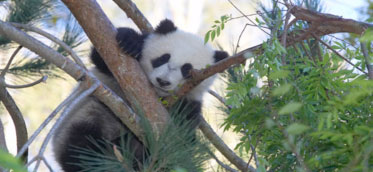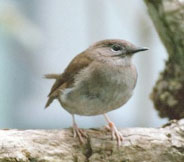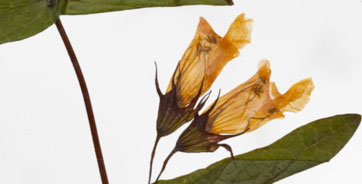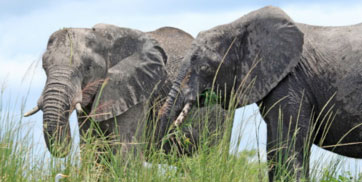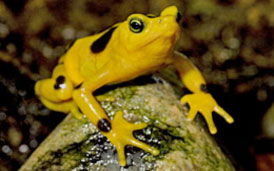The San Diego Zoo Offers 10 Reasons for Hope and Steps Out with the Global Action Team
Earlier last month the Zoological Society of San Diego launched two far reaching media and development projects which showcase the Zoo’s extensive global field conservation programs. Mongabay had the opportunity to attend the launch ceremony of the Zoo’s new ‘Global Action Team’ and the accompanying ‘Ten Reasons for Hope’ campaign. While at this event, we spoke with Alan Lieberman, Director of Regional Conservation Programs, about the development of both projects.
10 Reasons for Hope: Number 4. Giant Panda Milestone
Fifteen years ago, the giant pandas of China were well on their way to becoming extinct: the bears’ rarity, elusive lifestyle, and widespread habitat loss all spelled disaster for the species. Fortunately, the tide has turned in recent years, as global conservation partnerships, featuring the leadership of the San Diego Zoo and others, has amassed new scientific data that has led to a dramatic increase in breeding success for pandas. This summer, the 300th giant panda cub will be born, bringing the population in zoos and breeding centers to the target population size necessary for sustainability. The Chinese government has banned logging in panda habitat and added more than 50 new reserves to protect this iconic species, bringing the total to 62 reserves. Meanwhile, the San Diego Zoo is proud to have had its fifth giant panda cub, Yun Zi, born to first-rate mother Bai Yun. |
Mongabay: Please tell our readers about the ‘Ten Reasons for Hope’ campaign and offer some insights into the projects highlighted by this initiative.
Alan Lieberman: The ‘Ten Reasons for Hope Campaign evolved out of the Zoo’s endangered species program that we’ve had in place for several years. As the global endangered species crisis unfolded, the Zoo took a strong inventory of the situation. “What species have gone extinct, what can we still save, how bad is the situation?” When only pointing out negative factors facing conservation, we had a hard time getting the public engaged. We decided to take a different approach by not focusing on how bad things are for global conservation but rather show that through dedication and cooperation the situation can change.
The ‘Ten Reasons for Hope’ campaign is modeled on the “10 Best Concept” (beaches, destinations, etc) which is very popular in the media today. Through this campaign we want to highlight the Zoo’s ten best points of conservation. Not ten projects that we would like to do, but ten that we are actually doing in the field – our ten reasons for hope. And we could have picked from many different projects, but we chose the ten success stories that immediately came to mind, ones that we thought would build public interest. These are not necessarily the most important projects that we have in our field conservation programs, but are ones that are going to capture public interest and help create longevity for all of our programs. And next year it may be another ‘Ten Reasons.’ We can probably do this for many, many years as we have so many exceptional projects to choose from in our field conservation programs.
Mongabay: The Zoo is also launching the Global Action Team (GAT) project this summer; what are the goals of this initiative?
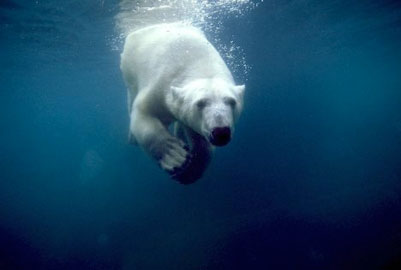 Join a Community of Global Conservationists. Photo courtesy of the San Diego Zoo |
Alan Lieberman: The goal of this project is to help fund our worldwide conservation work and bring the public closer to the heart of our global wildlife conservation efforts than ever before. Although we have the largest and most successful zoo membership in the world, we are trying to reach beyond our core membership and engage other people who care about wildlife in our vital field conservation work. The Global Action Team lets us show the public the conservation work we are doing outside our own fences and provides them with the opportunity to support our field conservation programs and share what we do with their friends. We want our GAT members or Global Action Teammates to play a role in making a difference for animals and ecosystems worldwide. It’s truly a chance to get the public involved in our work with elephants in Africa, giant pandas in China, polar bears in the Arctic, and California condors in Mexico, etc. We will give our Global Action Teammates updates and dialog direct from our field personnel as well as news about the work we are doing onsite at our conservation headquarters: the Arnold and Mabel Beckman Center for Conservation Research. The Global Action Team will strengthen the connection between field conservation and public interest.
Mongabay: Why start the project by focusing on the Zoo’s work with pandas, polar bears, and African elephants? What other species on the docket?
Alan Lieberman: Well, it makes sense to start the program with our work with these mega-fauna (pandas, polar bears, condors, and elephants). Everyone recognizes these species, and if you can ignite the public’s interest, the better chances are for sustained success. Going forward, I would also like to highlight our work with lesser known animal species, including others that are closer to home. A personal favorite of mine is our work with the endangered avian species of Hawaii which we began in 1993. This project has had a very good track record working with Hawaii’s endangered native birds. Although not as charismatic as a panda or elephant, the native bird species of Hawaii have also found a champion in the San Diego Zoo as they represent a whole suite of species that are critically endangered and found right here in the United States.
10 Reasons for Hope: 1. ‘Something to Sing About’
The San Diego Zoo and its partners have established two captive breeding facilities in Hawaii: the Maui and Keauhou Bird Conservation centers, which propagate flocks of native birds. They are then released to bolster wild populations and repopulate the species’ historic ranges. The puaiohi, or small Kauai thrush, is a success story. Biologists at the centers are now able to incubate and hatch eggs, raise young from day one (a major achievement), breed the birds reared at the center, release birds back into the wild, and see those captive-bred birds go on to breed and rear their young in the wild. So far, there have been 200 puaiohi released into their forest habitat. |
Those of us in the developed world tend to look askance at the developing world’s environmental challenges, but no other area on the planet has suffered the same rate extinction as those that have befallen the Hawaiian forest birds, and these are our own American species. We feel that it is important to lead by example, and the San Diego Zoo is focused on conservation at both the global and local levels. This will reflect in the Global Action Team agenda as the program further develops. Global action also means working with local interests.
10 Reasons for Hope: 5. Local Flora Protected
San Diego County is a biodiversity hotspot. Its diverse habitats support more species of endangered plants than any other county in the continental United States. The San Diego Zoo’s Native Seed Bank reached a milestone this year, collecting and storing seeds from nearly 23 percent of the area’s 1,500 native plant species to ensure their future survival. “This project is important to countless endemic species to this region. It also suports wildlife conservation, since animals are dependent on healthy habitats to survive,” said Bryan Endress, Ph.D., the San Diego Zoo’s director of Applied Plant Ecology. “By preserving plant life, we are keeping unique habitats intact.” |
Mongabay: The focus of both initiatives is the Zoo’s ex-situ or field conservation work. Why is it important to tell this story?
Alan Lieberman: Zoos are going through quite an interesting evolution. In the past, zoos have been rather introverted organizations, mostly interested in the strength of their collections: who had the largest collection, the most diverse, the largest number of species, etc. It was the menagerie concept, and even the best zoos followed this philosophy. Over the past few decades, the focus shifted from who has the most species (irrespective of whether breeding or not) to who has the most productive collections. Now, it’s changing even further to who has the most productive partnerships within the zoological community and within global conservation. What countries do you partner with as an organization? What agencies? What are you as an organization providing the world beyond a collection of animals to display? The San Diego Zoo has taken the lead in this area, and we now have partnerships with the Fish and Wildlife Service and other numerous state, federal, and international agencies. Our working partnerships are probably unequalled in the international zoological community. Our goal with development initiatives like the Global Action Team is to further the focus on field conservation by highlighting our ex-situ work.
10 Reasons for Hope: 6. African Elephants
African elephant matriarch Rainbow Spirit led 400 of her female companions on a migration north from Botswana across the Caprivi Strip to repopulate Angola after decades of absence. In collaboration with the San Diego Zoo, the conservation group Elephants Without Borders documented these elephants moving across the war-torn landscape, instinctively avoiding fields of land mines to make their way home. Data gathered from radio-collared elephants is now helping us shape our conservation strategies throughout southern Africa in relation to these majestic animals. |
Mongabay: How do you see the role of zoos and conservation developing in the future?
Alan Lieberman: In the past, zoos have come into criticism for being users of wildlife. We have very few animals these days that actually come from the wild. Almost all species that are held in our collections were bred from self-maintaining populations distributed among the world’s zoos. A zoo will never replace the actual experience of seeing a wild animal in its habitat, but zoos offer the public a tangible experience with real animals — how does an animal smell, sound, move, act, and interact? You won’t get that from a television set. Zoos provide the public a window to the varied and rich life of our planet, fostering greater interest in conservation. I became involved in zoology and conservation after being impassioned by zoos as a kid. How many other young people are there for us to inspire an interest in the natural world?
Mongabay: What are the San Diego Zoo’s long-term goals as a leading global conservation group?
Alan Lieberman: It’s a new role for zoos to step out in an arena that has been occupied by so many really good organizations. What zoos offer global conservation, though, is that very direct connection with the public, and we at the San Diego Zoo would like to leverage this public relations strength by partnering with field conservation groups. The Global Action Team project is a public outreach program that is probably unique in the zoo community. By educating and engaging the public at this level, we are using our Zoo’s resources to help insure that all wild animals don’t just exist in zoos. We are as concerned about the wild animals outside zoos as we are with the animals inside our facilities. Our long-term goal is for zoos to be a direct link between the public and global conservation.
10 Reasons for Hope: 3. ‘A Leap of Faith’
The chytrid fungus among amphibians has led to the worst die-off for a class of animals since dinosaurs became extinct. Both managed and wild populations across species and around the world have suffered mightily in the past decade from this disease. Fortunately, the San Diego Zoo established the first screening lab for chytrid fungus with a generous grant from the Institute of Museum and Library Services. We also provide scientific expertise for institutions to interpret disease test results and help them decide the best management strategy if they encounter a positive test result in their amphibian population. So far, 5,000 samples have been tested and the screening lab has served over 70 other facilities while creating biosecurity protocols to minimize the spread of this deadly disease. Additionally, this summer a 200-page publication about amphibian protocols to prevent disease will be available free of charge to all institutions that care for amphibians. |
